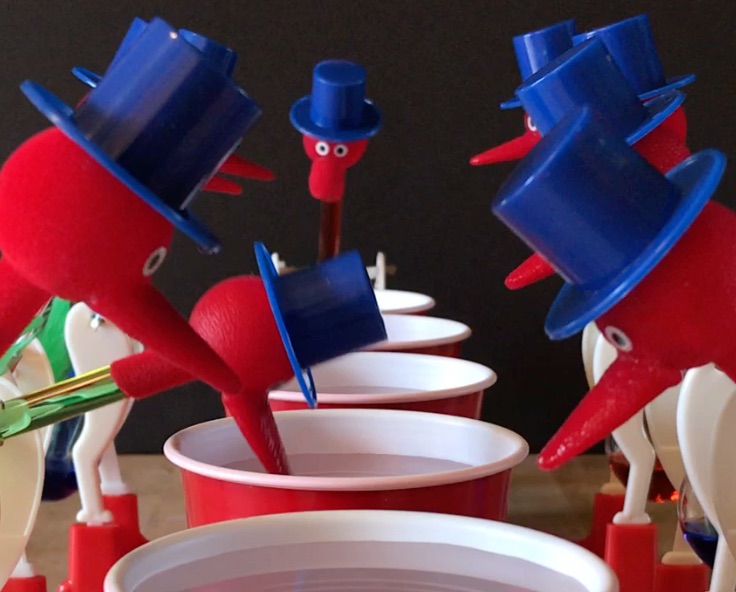Ice-cutting Experiment
Description: In this experiment, by Derek Muller at Veritasium, a copper wire and fishing string are attached to weights and placed over a block of ice. An increase in pressure causes the ices to melt below the wire and freeze after. The difference in behavior of the wire and the string are related to the material since metal is a better thermal conductor of heat. This phenomenon can be used in a unit on the particle model and state change. It can also be used to compare the thermal conductivity of different materials.
Web Resources: Regelation, Wikipedia, Thermal conductivity - Wikipedia
Candle-Powered Car
Description: The candle-powered car is an application of the Seebeck Effect. This effect is the result of thermal energy conversion directly into electricity. This phenomenon can be used in elementary school to show energy conversion from heat to electricity to the kinetic energy of the car. A more detailed explanation will be required in high school related to electron response to temperature differences in different materials. The Seeback circuit used in this candle-powered car can also be connected to a voltmeter and used as a temperature sensing thermocouple.
Web Resource: Seebeck Effect, Candle Car Kit - Amazon
Earthships
Description: An Earthship is a passive solar house that is designed to be off the electrical grid. It is generally constructed with natural and recycled materials. Much of the structure of the house is made with recycled tires that are filled with dirt. Thermal mass from the dirt, solar energy from the Sun, and cross-ventilation are used to keep the temperature within the house in a comfortable zone. This phenomenon can be used study thermal energy transfer, energy conservation, and human sustainability.
Web Resource: Earthship - Wikipedia
Brinicles
Description: As ocean water freezes into solid ice the remaining saltwater forms into icy "stalactites" that descend into the ocean. This can be used as a phenomenon in an elementary class to show changes in state. In middle and high school the chemistry can be explored more deeply.
Web Resource: Brinicle - Wikipedia
The Drinking Bird
Description: The drinking bird is a toy heat engine. The source of energy in this phenomenon is a mystery to most students. It is said that Albert Einstein and his wife Elsa were fascinated with this toy when they visited Shanghai in the 1920's.
Web Resources: The Engineering of the Drinking Bird, The Drinking Bird - Wikipedia






